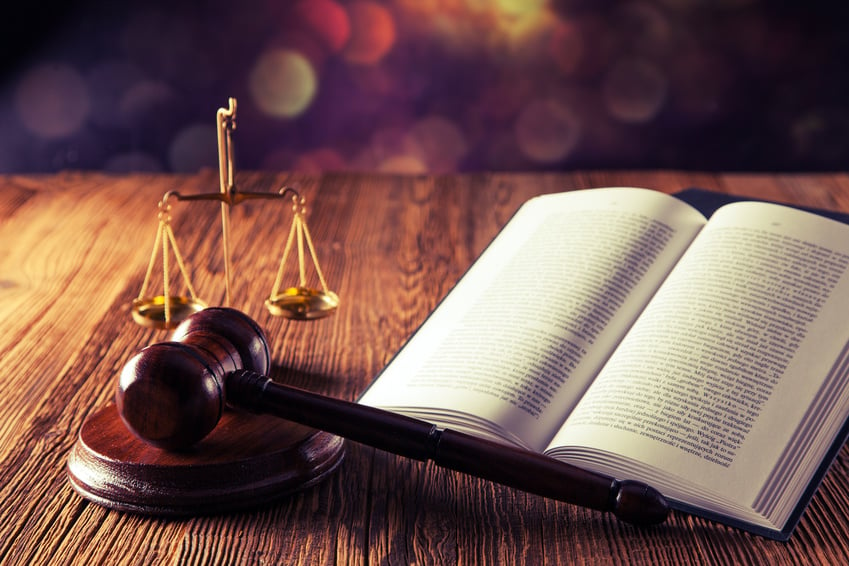1. Introduction
Two recent directives for lawyer comportment have triggered lively debates on how the fairness of arbitration procedures is affected by differences in party representatives’ conduct: the IBA Guidelines on Party Representation in International Arbitration (“IBA Guidelines”) and the Annex to the 2014 Arbitration Rules of the London Court of International Arbitration (“LCIA Rules”).[1]
Party representatives in international arbitration proceedings frequently come from different legal and cultural backgrounds. Their understanding of ethical conduct and their respective national codes of conduct often differ significantly. American attorneys, for example, are not only allowed to prepare witnesses for their oral testimony, but would violate their professional duties if they omit doing so. English barristers, on the other hand, are expressly prohibited from coaching witnesses. Whether witness coaching is permitted under Austrian law is disputed.[2] Since a prepared witness might be more convincing than a non-prepared witness, parties represented by lawyers bound by less restrictive codes might have an unfair advantage.
There are also other procedural aspects that significantly differ in legal traditions, e.g. document production and duty of candor. While scholars seem to agree that these different approaches can – in principle – impair the fairness of arbitration proceedings, there is no agreement on how to remedy this impairment.[3]
In addition to potentially undermining the level playing field in arbitration, differences in national codes of conduct cause significant uncertainty among party representatives. Counsel conduct in international arbitration proceedings can be governed by multiple and possibly incompatible national codes of conduct. The majority of these codes apply irrespective of the place of the proceedings or whether they are court proceedings or arbitration proceedings. In addition, the national code of conduct at the seat of arbitration may apply. This is problematic particularly because there is no clear or known rule of law on which code prevails in case of contradictions.[4]
The following three approaches have been proposed as solutions for the above mentioned dilemmas:
- The differences in national codes of conduct can be addressed on an ad hoc basis. This is, however, impractical if the tribunal itself is divided on questions of ethical counsel conduct.[5]
- A second possible approach is to incorporate provisions on counsel conduct in institutional arbitration rules, as in the new LCIA Rules. Parties can then establish a standard of conduct by agreeing on these institutional rules.[6]
- Thirdly, ethical conduct can be addressed in professional guidelines, a path chosen by the International Bar Association, who adopted the IBA Guidelines.[7]
This article primarily addresses the third approach and will therefore analyze the IBA Guidelines and their predecessors. To illustrate the practical implications of the IBA Guidelines, we will compare their provisions to national professional rules, particularly to Austrian law. In order to provide the readers with a comprehensive picture of the current debate we will briefly address the second approach and draw comparisons to the LCIA Rules.
2. Previous Codification Attempts
2.1. The IBA International Code of Ethics (1956, updated 1988) and the IBA International Principles of Conduct of the Legal Profession (2011)
The IBA International Code of Ethics was first adopted by the International Bar Association in 1956 and updated in 1988. The IBA International Code of Ethics was superseded by the IBA International Principles on Conduct of the Legal Profession (“IBA International Principles”) in 2011. The IBA International Principles constitute the “21st century version of a set of ethics for the legal profession first introduced more than 50 years ago (…)” and aim to promote the ideals and integrity of the legal profession.[8] The IBA International Principles are constituted by 10 core values: independence; honesty; integrity and fairness; conflicts of interest; confidentiality/professional secrecy; clients’ interest; lawyer’s undertaking; clients’ freedom; property of clients and third parties; and competence and fees.
The IBA International Principles will most likely be overruled by the new IBA Guidelines and thus be of little practical relevance.
2.2. Checklist of Ethical Standards for Counsel in International Arbitration (2009)
In 2009 Cyrus Benson introduced a Checklist of Ethical Standards for Counsel in International Arbitration (“Checklist”).[9] According to Benson, the Checklist’s principal goal “would be to create an even playing field insofar as ethics is concerned (…) while removing from the equation any diverging views held by tribunal members as to what conduct may be acceptable or unacceptable.“[10] In order to achieve this goal, counsel would need to be prepared to adapt or revise their ethical standards, if necessary. However, no counsel should be put in a position where he or she has to choose between being at a disadvantage or engage in conduct which is unethical under the respective national rules.[11]
The Checklist includes nine categories: general conduct; integrity/duty of candor; legal submissions; evidence; disclosure; communication with witnesses; communications with arbitrators; communications with opposing counsel; and orders/awards of the arbitrators. These categories are divided into aspirational resolutions and mandatory resolutions, the latter of which are subject to sanction by the tribunal, which is vested with the “sole and absolute discretion to determine appropriate sanctions“.[12] The parties, however, can accept (in whole or in part), reject, or modify the proposed resolutions, which reflect the underlying ad hoc optionality of the provisions.[13]
2.3. The Hague Principles on Ethical Standards for Counsel appearing before International Courts and Tribunals (2010)
The Hague Principles on Ethical Standards for Counsel appearing before International Courts and Tribunals (“The Hague Principles”) were proposed by the Study Group of the International Law Association on the Practice and Procedure of International Courts and Tribunals in 2010. The Hague Principles constitute a set of guidelines parties can agree on and include general principles such as fairness, independence and professionalism, and guidelines concerning relations with the client, conflicts of interest, relations with the international court or tribunal, presentation of evidence, as well as relation of others.[14]
2.4. International Code of Ethics for Lawyers Practicing before International Arbitral Tribunals (2011)
Doak Bishop and Margrete Stevens proposed the International Code of Ethics for Lawyers Practicing before International Arbitral Tribunals (“International Code”) in 2011.[15] Compared to Benson’s Checklist, the International Code is less flexible, yet broader in scope.[16] Unlike the IBA Guidelines – as will be discussed below – this proposed uniform code of conduct is intended to “prevail over national ethics or other standards for the practice of law before international arbitral tribunals.”[17] For the most part, the International Code was created by referencing the CCBE Rules[18] and the IBA International Code of Ethics.
Bishop and Stevens’ proposal includes core principles such as independence, personal integrity and confidentiality. It further features provisions regarding the relations with clients, conflict of interest, fee arrangements, relations with the tribunal, pleadings and presentation of evidence, and the relations between lawyers.
3. The IBA Guidelines on Party Representation in International Arbitration
The IBA Guidelines are the most recent attempt to remedy the impairment of the equality of opportunities as well as the insecurities regarding the applicable national codes of conduct. The IBA adopted the IBA Guidelines on 25 May 2013 in response to the call of arbitration practitioners for a universally applicable code of conduct for party representatives.[19]
3.1. Scope of Application
The IBA Guidelines not only apply to party representatives admitted to a domestic bar, but rather to “any person, including a Party’s employee, who appears in an arbitration on behalf of a Party and makes submissions, arguments or representations to the Tribunal on behalf of such Party, other than in the capacity as a Witness or Expert, and whether or not legally qualified“.[20]
The IBA Guidelines stress their contractual nature and primarily apply only if the parties agree thereon. Yet, pursuant to Guideline 1, arbitrators can apply the IBA Guidelines – even if they are not contractually agreed upon – if they consider themselves authorized to rule on matters of party representation and to ensure the integrity and fairness of arbitration proceedings.
However, the IBA Guidelines do not specify when arbitrators are authorized to rule on matters of party representation. At first glance, this seems logical since their scope of authority depends on the arbitration agreement. Clearly, the IBA Guidelines cannot grant the tribunal authority beyond the arbitration agreement – at least not without consent of the parties. Since arbitration agreements rarely address whether arbitrators have the authority to rule upon party representatives’ conduct, the IBA Guidelines should have provided criteria to identify such an authority.[21]
Furthermore, the IBA Guidelines do not elaborate on when the application of the IBA Guidelines is required to ensure the fairness and integrity of the arbitration proceedings. Thus, it is fairly unpredictable for parties and their representatives whether the IBA Guidelines can be unilaterally applied by the tribunal in their case.[22]
It is expressly determined that the IBA Guidelines do not displace applicable mandatory law, professional rules, and arbitration rules. They further provide for a primacy of the duty of loyalty to the party and the obligation to present the party’s case. Pursuant to the wording of IBA Guideline 3, every violation of the IBA Guidelines could be justified by the primary duty of loyalty to the party.[23]
This definition of the scope of application creates great uncertainty and makes it virtually impossible for parties and their representatives to predict how far the IBA Guidelines are applicable.[24] Yet, a code of conduct can only control the behavior of its addressees if they know their rights and duties in advance.[25]
Summing up, the IBA Guidelines only apply to the extent that neither national codes of conduct, nor the arbitration agreement, nor the primary duty of loyalty to the party, nor the obligation to present the party’s case, demand a different conduct and the parties have agreed on their application or the tribunal decides to apply them unilaterally.[26]
It is understandable that the IBA Guidelines do not aim to override national codes of conduct, because this would simply be impossible. Providing for the primacy of loyalty and the obligation to present the party’s case, however, effectively deprives the IBA Guidelines of any meaningful scope of application and incorporates the existing differences in definitions of ethical conduct. Which conduct is demanded by the duty of loyalty or the obligation to present the party’s case? Where are the limits of permissible conduct? There is no internationally agreed answer to these questions and the IBA Guidelines do not provide clarity in this crucial respect.
This article now will analyze some of the most controversial provisions of the IBA Guidelines.
3.2. Submissions to the Arbitral Tribunal
IBA Guideline 9 prohibits party representatives from making “knowingly false submission of fact“. If a party representative learns that he or she made a false submission he should – “subject to countervailing considerations of confidentiality and privilege“[27] – promptly correct such submission. According to the Comments to IBA Guideline 10, this duty equally applies to a newly-appointed representative who becomes aware of false submissions of his predecessor. IBA Guidelines 9-11 do not apply to legal submissions.[28]
The prohibition of making false submissions of fact is generally in line with the Austrian codes of conduct. Under Austrian law, false submissions cannot be justified by invoking the duty to represent the party’s interests with enthusiasm, loyalty and conscientiousness (Section 9 para 1 Attorneys’ Code).[29] Also, under the IBA Guidelines false submissions should not be justified by invoking the duty of loyalty – despite its explicit primacy.
The duty of candor applies also to fact and expert witnesses.[30] If a representative discovers that a witness intends to make false submissions, he should promptly take remedial measures. Representatives should advise the witness to testify truthfully and take reasonable steps to deter the witness from submitting false evidence. Moreover, he should urge the witness to correct or withdraw the false evidence. Considering that giving false evidence is a criminal offence under some national laws (e.g. Switzerland), it seems rather unlikely that a witness would be willing to correct his previous statement.[31] If this is the case, the representative should correct or withdraw the false evidence himself. As the most drastic remedial measure, the IBA Guidelines stipulate that the representatives should – “if the circumstances so warrant” – withdraw from the case. Under Austrian law this can hardly be reconciled with the duty to represent the party’s interests with loyalty and conscientiousness.
What is perhaps most problematic is that the IBA Guidelines do not define “false” submissions of fact. Is an incomplete submission “false”? How is a submission qualified which is not based on evidence?[32]
3.3. Document Production
IBA Guidelines 12-17 apply in case arbitration proceedings which involve or are likely to involve document production. Party representatives should inform the party of the need to preserve – so far as reasonably possible – all documents which could be included in a document production request.
The IBA Rules on the Taking of Evidence Which address the question which document production requests are admissible. The IBA Guidelines should, in principle, merely substantiate the duties of representatives in this context. Nevertheless, framed as obligations of the party representatives, the IBA Guidelines introduce additional obligations on the party. According to IBA Guideline 12, the party ought to preserve all documents which could be included in a (likely) document production request. This effectively introduces the concept of a “litigation hold”.[33]
Pursuant to IBA Guideline 13, party representatives should neither make a document production request nor object to a document production request “for an improper purpose, such as to harass or cause unnecessary delay“. There is however no universal agreement on what qualifies as an “improper” document production request. For example, a document production request which an American attorney considers crucial might appear as mere harassment to a representative from a civil law jurisdiction.[34]
Admissibility and scope of document production requests are highly disputed amongst arbitration practitioners. Equally disputed are the duties of party representatives in this context. Thus, the IBA Guidelines 12-17 do not represent an internationally agreed standard in this respect, but rather impose duties on party representatives which are unknown to lawyers from a civil law jurisdiction.[35]
3.4. Witness Preparation
IBA Guideline 24 stipulates that evidence given must reflect the witnesses’ own account of relevant facts. In so far, this Guideline reflects an international standard.[36] However, pursuant to IBA Guideline 24, a party representative may meet or interact with witnesses in order to discuss and prepare their prospective testimony. According to the Comments to the IBA Guidelines, this preparation also encompasses practicing direct and cross examination. The IBA has adopted the American model of witness coaching.[37]
The Austrian rules on professional conduct, for example, do not explicitly address the admissibility of witness coaching. Under Austrian law[38], personal contact with witnesses before and during an ongoing proceeding is permissible, as long as every kind of “improper influence” on the witness is avoided.[39] However, it is not further substantiated which conduct is considered “improper influence”. Consequently, it is unclear whether witness coaching is permissible under the Austrian rules on professional conduct.[40] As long as witness coaching is conducted in a way which ensures that the content of the witnesses’ testimony is not influenced, it should be permissible under Austrian law. However, if one recommends the use of different wording, which – without being wrong per se – might be easier to understand for the tribunal or more in line with the terminology used in the written submissions, it might violate Austrian law.[41]
3.5 Remedies of Misconduct
Party representatives are granted authority by the parties to act on their behalf. For this reason, the IBA concludes that – at least for the purpose of the IBA Guidelines – duties of the party representatives are effectively duties of the party. Accordingly, the party has to bear the consequences for violations of the IBA Guidelines.[42]
IBA Guideline 26 provides tribunals with a range of possible remedies to address representatives’ misconduct. These remedies include admonition of the representative, drawing adverse inferences, and taking the misconduct into account when allocating the costs. The tribunal may also “take any other appropriate measure in order to preserve the fairness and integrity of the proceedings“[43].
Which behavior constitutes “misconduct” is not conclusively regulated by the IBA Guidelines. “Misconduct” is defined not only as a breach of the IBA Guidelines but also encompasses “any other conduct that the Arbitral Tribunal determines to be contrary to the duties of a Party Representative“[44].
In short: the IBA Guidelines allow arbitral tribunals to take any measure they deem appropriate in order to preserve the “fairness and integrity” of the proceedings and to remedy a violation of inconclusively defined duties of party representatives. However, a regulation as vague and unpredictable as the IBA Guidelines falls short of serving the “fairness and integrity” of arbitration proceedings.
In deciding which remedial measures are appropriate, the arbitral tribunal should take into account in how far the party knew of, influenced or ordered the representatives’ conduct. Nevertheless, it remains unclear how a tribunal is expected to assess the degree of a party’s involvement. If the arbitral tribunal would have to investigate the communications between the parties and their representatives and the latter were expected to provide this information, this would be a violation of the representatives’ duty of confidentiality.[45]
4. General Concerns
4.1. Rules of Professional Conduct are Foreign to Arbitration
Formally, the IBA Guidelines are not professional rules of conduct. Yet, they regulate professional conduct. The IBA Guidelines effectively provide for arbitral tribunals to decide on matters which fall outside their typical scope of responsibilities. National courts and national bar associations are in charge of enforcing rules of professional conduct. Arbitral tribunals are in charge of enforcing procedural rules and a fair conduct of the proceedings. Under the IBA Guidelines the same arbitrators are responsible for deciding the dispute between the parties and ruling on violations of the party representatives’ professional duties. This double function might impair the parties trust in the impartiality of the arbitrators. Arbitrators’ rulings on the subject matter of the dispute must be independent of the question of whether or not a representative has violated his professional duties.[46]
For precisely this reason, it is a common approach in a significant number of jurisdictions (e.g. Austria) to address potential violations of representatives’ professional duties in a separate proceeding.[47]
4.2. Risk of Misuse to Delay Proceedings
In the course of the previous years, the duration and costs of arbitration proceedings have risen significantly. One of the main reasons is the growing number of procedural motions, such as document production requests.[48]
Consequently, there is reason to fear that the IBA Guidelines will be used as a tool to delay or sabotage arbitration proceedings. For example, in order to delay the proceedings or distract the tribunals from the merits of the case, it would be sufficient to claim a violation of the IBA Guidelines. Since neither the scope of application, nor the term “misconduct“, nor the remedies for misconduct are conclusively regulated in the IBA Guidelines, there is infinite room for discussions. The vague terminology in general further increases this problem.[49]
5. Excursus: The Annex to the new LCIA Rules
The General Guidelines to the Parties’ Legal Representatives (“General Guidelines”) appear as an Annex to the new LCIA Rules introduced in 2014. The LCIA thereby is the first arbitral institution to issue mandatory guidelines for party representation and conduct. [50]
At first sight the General Guidelines do not seem very lengthy or detailed. However, they must be viewed as part of the overall applicable rules. Hence, Paragraph 1 of the General Guidelines states: “Nothing in these guidelines is intended to derogate from the Arbitration Agreement or to undermine any legal representative’s primary duty of loyalty to the party represented in the arbitration or the obligation to present that party’s case effectively to the Arbitral Tribunal. Nor shall these guidelines derogate from any mandatory laws, rules of law, professional rules or codes of conduct if and to the extent that any are shown to apply to a legal representative appearing in the arbitration.”[51]
Legal representatives must agree to comply with the General Guidelines as a condition of appearing by name before the tribunal.[52] The sanctions available to the tribunal in case of non-compliance are stipulated in Article 18.6 of the LCIA Rules (rather than in the Annex) and consist of the following: a written reprimand, a written caution as to future conduct in the arbitration and any other measure necessary to fulfil the general duties of the tribunal as specified in Article 14.4 of the LCIA Rules. These sanctions, however, do not appear to be particularly troublesome; for example, written reprimands would remain confidential and may not be considered a very powerful deterrent.[53]
When comparing the General Guidelines to the IBA Guidelines, one significant difference stands out: while the IBA Guidelines are only applicable when parties “opt in” (i.e. voluntarily decide to be bound the IBA Guidelines) or arbitral tribunals decide to apply them,[54] it is a condition for counsel to agree to comply with the General Guidelines in order to appear by name before the tribunal.[55] In relation to the IBA Guidelines, this might be the General Guidelines’ most convincing advantage.
While both the General Guidelines and the IBA Guidelines do not intend to displace otherwise applicable mandatory laws such as professional rules or codes of conduct, it seems that this is – at the same time – their main disadvantage, causing them to have little practical effect. [56]
6. Problem Solved?
No. Due to the above-mentioned difficulties concerning the practical application of the IBA Guidelines, they do not meet their stated purpose, but rather intensify the problem they aim to solve. Instead of creating a uniform code of conduct for international arbitration, they pose an additional potentially applicable code of conduct that adds to the overall confusion.[57]
It may, however, be doubted whether a standardized international code of conduct for party representatives is even required to ensure equal opportunities for the parties. Most institutional arbitration rules already provide arbitrators with expressed or implied powers to ensure the fairness and integrity of the proceedings.[58] Instead of a “one size fits all” approach arbitrators could discuss possible differences between the respective national codes of conduct with the party representatives at the beginning of the proceedings. Even without agreeing on a consensual approach, the authority of the arbitrators appears sufficient to safeguard the fairness and integrity of the arbitration. An experienced arbitrator is generally aware of the different judicial and cultural backgrounds of the parties and their representatives and regularly takes this into account for example in the Terms of Reference or the Procedural Order No 1.[59]
In any case, both the IBA and the LCIA have triggered extensive discussions on conduct of party representatives. It remains to be seen whether the LCIA started a “trend” by including the General Guidelines as an Annex to the LCIA Rules.[60] Other institutions might follow and introduce their own codes of conduct for counsel in international arbitration and thereby contribute to this ongoing discussion. Since a harmonization of national codes of conduct is unlikely in the foreseeable future, fostering a dialog and understanding between arbitration practitioners seems the best possible approach.
[1] William W. Park, A Fair Fight: Professional Guidelines in International Arbitration, in Arbitration International 409 (2014).
[2] Fabian von Schlabrendorff, Interviewing and Preparing Witnesses for Testimony in International Arbitration Proceedings: The Quest for Developing Transnational Standards for Lawyers’ Conduct, in Liber Amicorum Bernardo Cremandes 1161, 1172, 1174 (Fernández-Ballesteros & Arias eds, 2010); Gary B. Born, International Commercial Arbitration 2855 (2d ed. 2014); William W. Park, A Fair Fight: Professional Guidelines in International Arbitration, in Arb. Int’l 409 (2014).
[3] Schlabrendorff, supra note 2, at 1172 et seqq; Born, supra note 2, at 2855; Park, A Fair Fight, supra note 2, at 409.
[4] Born, supra note 2, at 2852 et seqq.
[5] Park, A Fair Fight, supra note 2, at 417 et seq.
[6] Park, A Fair Fight, supra note 2, at 419 et seq.
[7] Park, A Fair Fight, supra note 2, at 418 et seq.
[8] IBA publishes new code of conduct for the global legal profession, http://www.ibanet.org/Article/Detail.aspx?ArticleUid=bc99fd2c-d253-4bfe-a3b9-c13f196d9e60 (last visited Dec. 15, 2014).
[9] Benson, Can Professional Ethics Wait? The Need for Transparency in International Arbitration, in 3 (1) Disp. Res. Int’l 78 et seqq (2009).
[10] Benson, Can Professional Ethics Wait?, supra note 9, at 85.
[11] Benson, Can Professional Ethics Wait?, supra note 9, at 85 et seqq.
[12] Benson, Can Professional Ethics Wait?, supra note 9, at 87.
[13] Benson, Can Professional Ethics Wait?, supra note 9, at 88.
[14] Cummins, The IBA Guidelines on Party Representation in International Arbitration – Levelling the Playing Field?, in 30 (3) Int’l Arb. 445 (2014).
[15] R. Doak Bishop & Margarete Stevens, Advocacy and Ethics in International Arbitration: The Compelling Need for a Code of Ethics in International Arbitration: Transparency, Integrity and Legitimacy, in Arbitration Advocacy in Changing Times, ICCA Congress Series Vol. 15, 391 et seqq (van den Berg ed., 2011).
[16] Cummins, The IBA Guidelines on Party Representation in International Arbitration – Levelling the Playing Field?, in 30 (3) Int’l Arb. 444 et seq (2014).
[17] International Code Rule 1.
[18] CCBE Code of Conduct.
[19] Born, supra note 2, at 2852 et seqq.
[20] IBA Guideline 4.
[21] Alexander Petsche & Anna Förstel, Die IBA Guidelines on Party Representation, ecolex 783, 785 (2014).
[22] Born, supra note 2, at 2854.
[23] Born, supra note 2, at 2852 et seqq.
[24] Id.
[25] R. Doak Bishop & Margrete Stevens, Safeguarding the Fair Conduct of Proceedings – Report, in International Arbitration: the coming of a new age?, ICCA Congress Series Vol. 17, 473 et seqq (van den Berg ed., 2013).
[26] IBA Guidelines 1-3.
[27] IBA Guideline 10.
[28] Comments to the IBA Guidelines 9-11.
[29] Erich Feil & Fritz Wenning, Anwaltsrecht Section 9 RAO 112 (2012).
[30] The terminology of the Guidelines differentiates between witnesses (as witness of fact) and experts. “Witness” for the purpose of this article encompasses both fact and expert witnesses.
[31] In Austria, witness testimony before an arbitral tribunal is not a criminal offence. Section 288 Austrian Criminal Code penalizing false evidence “in court” does not apply to arbitration. (Franz Pöschl & Wilfried Seidl, in Wiener Kommentar zum StGB (Höpfl/Ratz eds, 2nd ed, 2010) section 288, mn 4).
[32] Born, supra note 2, at 2856.
[33] Michael Schneider, President’s Message: Yet another Opportunity to Waste Time and Money on Procedural Skirmishes: The IBA Guidelines on Party Representation, in 31 (3) ASA Bulletin 498 (2013).
[34] Jeffrey Waincymer, IBA Guidelines On Party Representation International Arbitration, http://kluwerarbitrationblog.com/blog/2013/07/10/iba-guidelines-on-party-representation-in-international-arbitration/ (last visited Dec. 15, 2014).
[35] Jean-Christophe Honlet, The IBA Guidelines on Party Representation in International Arbitration, in 30 (6) J. Int’l Arb. 706 (2013).
[36] Born, supra note 2, at 2859 et seqq.
[37] Born, supra note 2, at 2861.
[38] Section 8 Directive on the practice of the profession of lawyer and on the supervision of the duties of the lawyer (RL-BA 1977).
[39] Schlabrendorff, supra note 2, at 1172.
[40] Stefan Riegler & Christian Koller, Austriain, in World Arbitration Reporter 80 (Loukas Mistelis & Laurence Shore eds., 2nd ed. 2010); Schlabrendorff, supra note 2, at 1171 et seq.
[41] Petsche & Förstel, Die IBA Guidelines, supra note 20, at 785.
[42] Comments to the IBA Guidelines 1-3.
[43] IBA Guideline 26 lit d.
[44] IBA Guidelines, Definitions, p 3.
[45] Eliot Geisinger, Michael Schneider & Felix Dasser, IBA Guidelines on Party Representation in International Arbitration. Comments and Recommendations by the Board of the Swiss Arbitration Association (ASA), http://www.arbitration-ch.org/pages/en/asa/news-&-projects/details/972.ethics-and-party-representation-asa-contributes-to-the-debate.html (last visited Dec. 13, 2014).
[46] Id.
[47] Id; compare also Section 20 et seqq. Austrian Disciplinary Code (“Disziplinarstatut für Rechtsanwälte und Rechtsanwaltsanwärter”).
[48] Schneider, President’s Message, supra note 33, at 496.
[49] Schneider, President’s Message, supra note 33, at 497.
[50] Khaled Moyeed & Clare Montgomery, Key Changes in the LCIA’s new Arbitration Rules, http://kluwerarbitrationblog.com/blog/2014/08/29/key-changes-in-the-lcias-new-arbitration-rules/ (last visited Dec. 6, 2014).
[51] Cummins, The IBA Guidelines, supra note 14, at 444.
[52] Khaled Moyeed & Clare Montgomery, Key Changes in the LCIA’s new Arbitration Rules, http://kluwerarbitrationblog.com/blog/2014/08/29/key-changes-in-the-lcias-new-arbitration-rules/ (last visited Dec. 6, 2014).
[53] Sapna Jhangiani, How far do the new LCIA Guidelines for Parties’ Legal Representatives and the IBA Guidelines on Party Representation go?, http://kluwerarbitrationblog.com/blog/2014/05/21/how-far-do-the-new-lcia-guidelines-for-parties-legal-representatives-and-the-iba-guidelines-on-party-representation-go/ (last visited Dec. 6, 2014).
[54] See above 3.1.
[55] General Guideline 18.5.
[56] Sapna Jhangiani, How far do the new LCIA Guidelines for Parties’ Legal Representatives and the IBA Guidelines on Party Representation go?, http://kluwerarbitrationblog.com/blog/2014/05/21/how-far-do-the-new-lcia-guidelines-for-parties-legal-representatives-and-the-iba-guidelines-on-party-representation-go/ (last visited Dec. 6, 2014).
[57] Born, supra note 2, at 2855.
[58] Eliot Geisinger, Michael Schneider & Felix Dasser, IBA Guidelines on Party Representation in International Arbitration. Comments and Recommendations by the Board of the Swiss Arbitration Association (ASA), http://www.arbitration-ch.org/pages/en/asa/news-&-projects/details/972.ethics-and-party-representation-asa-contributes-to-the-debate.html (last visited Dec. 13, 2014).
[59] Petsche & Förstel, Die IBA Guidelines, supra note 20, at 783 et seqq.
[60] Id.





